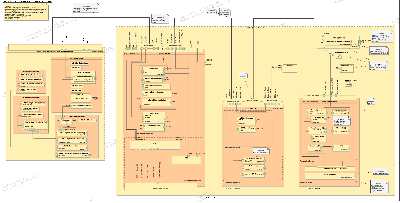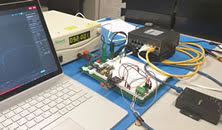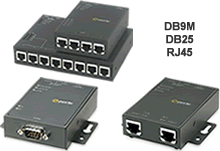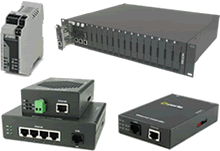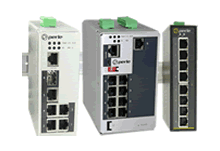
Scientific Workgroup for Rocketry and Spaceflight (WARR, Wissenschaftliche Arbeitsgemeinschaft für Raketentechnik und Raumfahrt), the largest student group at the Technische Universität München (TUM), is focused on developing, testing, and launching experimental sounding rockets. Project Nixus, the latest challenge taken on by the motivated team of students, aims to design a liquid-fueled sounding rocket that will participate in student competitions such as the European Rocketry Challenge. The rocket is intended to compete in the 30k Student Research and Developed (SRAD) competition segment. Among several challenges, the main goal in this competition is to hit a target altitude of 30,000 feet (9144 m) as accurately as possible.
Utilizing liquid propulsion signifies a major step up in system complexity for the WARR rocketry team. With the rocket being designed from scratch, their focus lies on completing a functioning and qualifying system in a short amount of time. Future generations will optimize and refine the design over time and apply the technologies and competencies developed in subsequent projects, such as going beyond the Karman Line (>100km altitude).
Manufacturing and testing are especially important steps in the development process. These serve to validate and improve the designs, but also give WARR practical experience in the contemporary commercial spaceflight industry, enabling students to gain industry-relevant hands-on experience long before the completion of their studies.
Perle Systems is pleased to sponsor the team at WARR with an Industrial PoE Switch, a pair of long-range Ethernet Extenders, and an extended temperature Serial Device Server. We can all follow their progress here.

Project Nixus Design Details
Antonio Steiger, Electronics Team Lead for Project Nixus comments, We are designing the rocket and all the electronics from scratch. As you can imagine, there is a lot of complex equipment that communicates, monitors, and coordinates a successful launch and flight. Every component we choose must undergo careful consideration in terms of suitability and placement.
There are three core parts of the build.
1. The Rocket: Durability and weight are the most critical considerations for every component onboard the rocket. The heavier the rocket, the more thrust is needed to launch it off the ground. This is especially critical in liquid-propellant rockets as liquid engines are generally heavier than solid engines due to the weight of pumps and fuel lines. Steiger comments, Flight computers on the rocket receive commands and send diagnostic and monitoring data back to the control room via RS485. We chose RS485 serial transceivers for the rocket because of their light weight. In addition, they allow us to have a reliable, simple wired connection from the rocket to the Chronos launchpad interface.
2. Chronos - the launch pad interface situated within 10m of the rocket: High temperatures and explosive substances make launch pads dangerous environments where strict adherence to security guidelines is required. Perle provided two pieces of critical device networking equipment to operate from here. The IOLAN SDG2 TX Device Server is used to facilitate the RS485 data transmission and conversion between the onboard rocket flight computer and the ethernet ground infrastructure and monitoring software. It is a robust full duplex serial device server, capable of operating at +74℃, that naturally maps onto the two flight computers. While maintenance and control of the IOLAN Device Server is easy through web-based monitoring software, this line of communication is severed upon take-off. The second is an IDS-108FPP Industrial PoE Switch used to provide 30 watts of power to several IP cameras that monitor the rocket from the launch pad. All of the data gathered from the telemetry equipment, sensors, and cameras, provide important insights to the team of rocket scientists sitting in the ground control station.

3. Cor - Part of the radio ground station, the control room cabinet is situated 600m – 1000m from the launch pad:, Safety distances of at least 600m, but often further, between the launch pad and the control room pose significant data-transmission challenges for the electronics team. Steiger explains, Our goal for the setup was to use one interconnect cable between the control room and the launch pad. Perle's TC Ethernet Extenders make this possible and they reduce the conductor count necessary to transmit the data from Ethernet's 8 to just 4. This enables us to use a ubiquitous and cheap ethernet cable for multiple kilometers, while having a reserve of four additional conductors for additional functionality.
Update #1: Electronics Testing Phase
Steiger comments, We successfully integrated our secondary flight computer via the IOLAN, allowing us to reconnect to the flight computer if the connection is physically lost at any point. One of the things we particularly like about the IOLAN is that the documentation is exceptionally thorough. The device feels like it was made for engineers. We can use it to implement anything we want and run diagnostics via SSH to help us detect errors. The LEDs on the device are implemented extremely cleanly and are a great help in development. The web interface is also very intuitive, and we use it regularly.
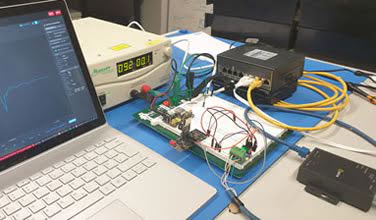
Testing with Perle IDS Switch and IOLAN
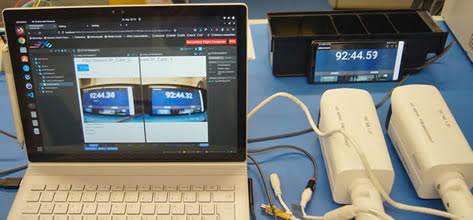
IP Camara Test
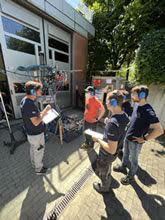
Cold Flow Testing
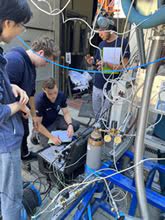
Mess Interface
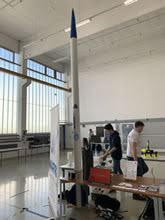
Rocket Mock-up
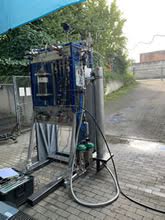
Assembled Testing Rig
Steiger continues, All testing of the ground infrastructure was successfully carried out via the Perle IDS Switch and the WebRTC protocol. With this combination, we were able to achieve an average latency of less than 164ms for live video in the browser. This far exceeds the standard 460ms latency of camera manufacturers. We are really impressed with the compact form factor of the Perle Switch and the reliable display of activity in the network with the LEDs.
Update #2: Successful Subscale (Capacitive) Engine Hotfire
To develop the rocket’s engine, a subscale version of it was hot-fired. This was the first time the Nixus project produced a flame. The in-house developed igniter uses hydrogen and oxygen to reliably ignite any engines on the Nixus test stand. It allows rapid testing turnarounds which are going to be crucial in the development of the full-scale liquid engine for Space Port America Cup 2023. In the coming weeks, it is going to power the first large-scale hot fires of the sub-scale research engine manufactured by Nixus. During the test, the IDS-108FPP Industrial PoE Switch provided 30 watts of power to the IP surveillance cameras in sub-zero temperatures. It reliably handled valuable measurement data, control commands, and two live video streams.
In a separate test, the IOLAN SDG2 TX Device Server collected serial telemetry data from the flight computers which was successfully transmitted over the TC Ethernet Extenders long-range SHDSL link.
Steiger comments, In addition to the flight computer data, we were transmitting two full-HD video streams at 30FPS (frames per second) with no additional latency from the switch or extenders. In fact, we found that we only utilized 15% - 17% of the SHDSL connection. The software for the extenders was very clear and helpful and power consumption from all devices was better than expected. This is important for operation via UPS. To sum it up, we are pleased to report that everything worked correctly without much effort.
Update 3: Safely performing launches at a distance of 500m
The Project Nixus team recently conducted a solid rocket launch and full-scale engine tests to prepare for the European Rocketry Challenge later this year
Steiger comments, We brought our long-range interconnect -- a 500m long cost-effective Ethernet cable with 4 data wires, one emergency stop circuit, and two control sequence initiation circuits -- successfully online. This was made possible by the SHDSL technology of the Ethernet Extenders provided by Perle. Through a single cable, four wires transmit live video and other data, and the rest of the wires are used in parallel for the critical safety circuits. This includes an emergency stop circuit with a button in the control room and at the launch pad, as well as two sequence buttons that allow engine shutdown and purging from both the control room and the launch pad. We have finally been able to move away from software-based sequence triggers and safely perform launches at a distance of 500m.
The long-range connection,
Steiger continues, was used successfully during a qualifying launch of our EX-1B solid engine rocket to test the ground and flight electronics. Everything worked flawlessly. The engine ignition over the long-range connection was precise while live video data was being transmitted simultaneously.
In addition, the Project Nixus team also carried out a full-scale engine test of the combustion chamber for almost the full burn duration of approximately 11 seconds. The combustion chamber performed absolutely stably, with no anomalies. Concludes Steiger, We are now, to our knowledge, the only student team in Europe that has developed a flightworthy Ethanol / Liquid Oxygen Bi-Liquid engine. This is a huge milestone for us, one that deserves recognition.
Final Update: WARR wins EuRoC 2023 Design Award
Project Nixus took home the Design Award from the 2023 European Rocketry Challenge (EuRoC) despite having to abort the launch of its EX-4 rocket. The EX-4 system was named the absolute best in terms of design and innovation,
according to Antonio Steiger, Electronics Team Lead for the project.
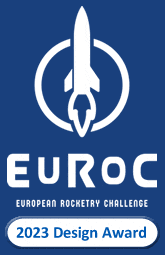
For more than a year the Project Nixus team researched, developed, and rigorously tested the Chronos
launch pad interface, the Cor
control room, the electronic and related systems, and of course the EX-4 rocket itself.
More than 600 students in 22 teams from 14 European countries participated in the competition, which was held over seven days in central Portugal. It was the fourth edition of the event, which bills itself as the first launch competition for European university students.
Severe weather and heavy rains interfered with final preparations and ultimately forced the launch window to move ever later in the day to the point where not enough time was left to ensure a safe and successful launch. While disappointing, the launch was not a setback. Dealing with adverse conditions is unavoidable in rocketry, and EuRoC gave the Project Nixus team valuable launch preparation experience.
The team was also able to forge connections with rocketry students from across Europe with whom they hope to exchange concepts and ideas and perhaps collaborate on future rocketry endeavors.
Perle is proud to have been a sponsor of Project Nixus, and to have provided WARR with an Industrial PoE Switch, a pair of long-range Ethernet Extenders, and an extended temperature Serial Device Server – components integral to the successful development of the launch systems.

